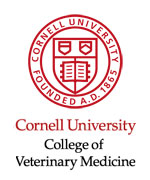"Impacts of Wildlife Infections on Human and Livestock
Health with Special Reference to Tanzania: Implications for
Protected Area Management"
Sarah Cleaveland, Karen Laurenson, Titus Mlengeya
Microbial pathogens are integral components of natural ecosystems
and play an important role in the evolution and ecology of host
communities. However, the growth of human population and expansion
of human activities has affected contact and transmission patterns
between human and animal populations, leading to the emergence
of several major diseases that affect human health, livestock
economies and wildlife conservation.
Zoonotic pathogens, particularly those that infect wildlife,
pose a particular risk for human disease emergence (relative
risk for zoonoses = 1.97; for pathogens infecting wildlife =2.44).
Zoonotic diseases associated with wildlife, such as sleeping
sickness and anthrax, also pose a potential threat to the tourist
sector, which is a major source of foreign exchange in many African
countries. Wild animal populations are often implicated as reservoirs
of emerging zoonoses, but we have little knowledge of the infection
dynamics of these diseases in wildlife, which limits the options
and effectiveness of disease control.
Infections in wildlife also have major implications for livestock
development in areas adjacent to wildlife (protected) areas.
Most livestock pathogens (54%) can also co-infect wildlife. Where
wild populations are the source of disease for livestock, land-use
conflicts invariably arise, typified by problems associated with
malignant catarrhal fever (MCF) in East Africa and foot-and-mouth
disease in southern Africa. MCF has been a major factor contributing
to the decline in livestock production in pastoralist communities
living in and around protected areas of East Africa, leading
to a growing demand for cultivation, a form of land-use generally
incompatible with wildlife conservation. In other resource-poor
communities, a deteriorating livestock production base, exacerbated
by diseases transmitted from wildlife, has also fuelled a growth
in illegal wildlife hunting to meet growing demands for both
dietary protein and cash income.
Options to control infection in wildlife are limited and current
strategies, such as culling and movement restriction, have major
negative repercussions on wild populations. The engagement of
wildlife managers in issues relating to both public health and
livestock development is therefore crucial in order to develop
effective and appropriate strategies for disease control.
|
|











